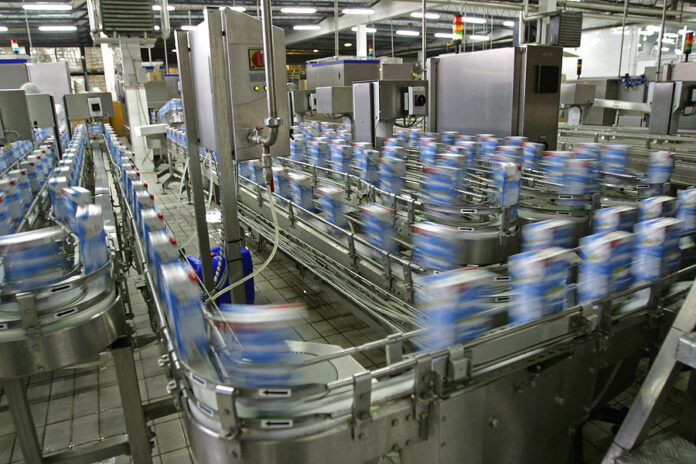
By Sunil Sanghavi CEO of NobleAI
Key takeaways:
- Target high-impact operational problems: Focus AI investments on your biggest pain points and cost centers like demand forecasting or inventory management rather than chasing trendy applications with limited long-term value.
- Start with existing data, not perfect data: Don’t wait for massive datasets; AI can deliver real value using your company’s small, proprietary datasets for product development and process optimization challenges.
- Choose solutions that enhance human capabilities: Prioritize AI that augments your workforce’s decision-making abilities and builds competitive advantages rather than simply automating jobs or cutting headcount.
When shiny new technologies come along, it’s natural to feel pressure to adopt them in hopes of some competitive business improvements. We are now in one of the greatest shiny new object moments of all time thanks to the arrival of AI. Of course AI is not just one new technology. With countless apps and products, AI is the greatest technological shift we’ve experienced since the emergence of the Internet. And this wide range of artificial intelligence applications are tempting executives with offers of increased efficiency, lowered costs, and a host of other benefits.
Behind this temptation is the quiet recognition that sometimes rushing into a new technology and committing to a big capital outlay, too quickly, can result in getting locked into a solution that quickly loses relevance. The industry is littered with examples of technologies that companies rushed to implement thinking they were smart early adopters only to find their investment written off the next year as a loss.
When it comes to AI, how can you be assured that your investments will stand the test of time and not wind up in the garbage heap of failed tech investments? While the only certainties in business are change and competition, AI is here to stay, so it’s worth taking the time to sort through the hype and work to find the solutions that are most meaningful for your business for the long term.
Here is a practical framework with six actionable strategies to consider when evaluating an AI roadmap that withstands the test of time and addresses your most critical pain points — like food safety, regulatory compliance, and sustainability tracking — while also building flexible capabilities that align with operational needs, data readiness, and your workforce that adapt to tomorrow’s market demands. As consumer preferences evolve and regulatory requirements intensify, these approaches will help manufacturers distinguish between essential AI capabilities worth investing in today and overhyped applications likely to disappear, creating sustainable competitive advantage in an increasingly tech-driven food ecosystem.
1. Focus on high value operational inefficiencies
This may sound obvious but when considering the breadth of AI applications catching people’s attention, skip the temptation to focus on those that might provide limited or short term gains. Using AI to address your biggest operational pain points or bring efficiencies to your biggest cost centers such as improvements in demand forecasting or inventory management to reduce waste could be a smart long term move.
2. Prioritize solutions with clear data foundations
I hear far too often that executives worry that they don’t have enough data to train an AI model. But despite the large public attention around Large Language Models (LLMs), there is real magic to be found in running AI with your company’s small, private datasets. With the right kind of AI, product development and process optimization challenges can be tackled by leveraging the small, proprietary datasets available in your company today. This approach makes implementation faster and more successful than projects requiring extensive new data collection infrastructure and processes.
3. Prepare for ingredient shortages / replacements
With a rapidly changing trade environment and an evolving regulatory environment, many manufacturers may be forced on a moment’s notice to find alternatives for key ingredients in their product lines. AI can be invaluable in this case to identify replacement ingredients that optimize to a product’s quality, consumer expectations, and performance.
4. Balance quick wins with strategic transformation
Using AI to revamp a product line with a strategic ingredient replacement may be a quick win but also a valuable one. Balance this kind of investment with a technology portfolio approach that includes both short-term applications (like supply chain visibility) and longer-term strategic initiatives (like personalized nutrition) to demonstrate immediate value while building toward transformative capabilities.
5. Focus on augmenting, not replacing, human expertise
Technologies that focus initially on trimming headcount or reducing the amount of time spent on certain tasks, can be good goals. But these can also backfire and find companies scrambling to rehire skilled talent. Another way of looking at how to incorporate AI is to ask yourself, does it boost your competitiveness, does it support the creation of superior products, does it make you more responsive to customers? A yes to any of those questions is a technology that will stand the test of time. Prioritize AI solutions that enhance your workforce’s capabilities in complex decision-making scenarios, such as formulation development for food products rather than attempting to automate entire processes immediately.
6. Select applications aligned with sustainability goals
Finally, invest in AI that advances your sustainability targets, such as reducing food waste, or enabling circular economy initiatives. Government regulations may come and go in the short term, so it’s best to align these efforts with corporate goals. These applications often deliver both environmental benefits and operational cost savings while meeting growing stakeholder expectations.
Far too often, well-intentioned technology investments in food and beverage manufacturing can become obsolete as broader technological ecosystems evolve. And right now they are evolving rapidly, as exemplified by the astonishingly rapid evolution of AI. So, regardless of where, when, and how you start your AI journey, it’s a good idea to pick a technology and provider that has demonstrated wide-ranging applicability and the ability to scale to address the challenges you will face over the next few years.
 Sunil Sanghavi is CEO of NobleAI, a pioneer in science-based AI solutions for chemical and material informatics. Sunil has a rich operating background in deep-tech companies. Most recently, he was Senior Investment Director at Intel Capital, investing in AI/ML hardware and software companies including Motivo, Untether AI, Syntiant, and Kyndi.
Sunil Sanghavi is CEO of NobleAI, a pioneer in science-based AI solutions for chemical and material informatics. Sunil has a rich operating background in deep-tech companies. Most recently, he was Senior Investment Director at Intel Capital, investing in AI/ML hardware and software companies including Motivo, Untether AI, Syntiant, and Kyndi.

Credit: Source link













